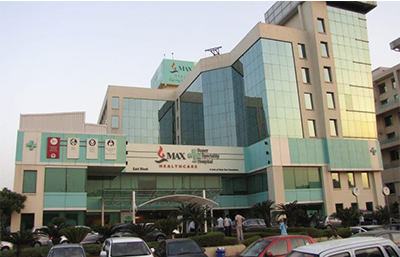Elbow Replacement

Total elbow replacement is a surgery is a procedure recommended to people suffering from severe pain in the elbow joint which can’t be treated by medicines or any of the preliminary methods. Total elbow replacement also known as total elbow anthroplasty (TEA) is carried on in cases of specific types of arthritis, severe fractures or instability. This surgery is not as common as the hip or knee replacement surgeries, but it has proved to be very helpful in relieving joint pain and getting back the pleasure of doing things they enjoy.
The elbow consists of three bones i.e. the humerus (the upper arm bone), the radius (forearm bone on the pinky finger side) and the ulna (forearm bone on the thumb side. The three bones are connected with a hinge joint, which is covered with articular cartilage. The articular cartilage is a smooth substance that protects the bones and helps them to move easily. The elbow joint is held together with the help of muscles and ligaments.
In case of severe arthritis or multiple fractures of the elbow joint an elbow replacement surgery is recommended. In this surgery the elbow joint is replaced by an artificial joint which consist of two metal stems and a hinge made up of metal or plastic. During the surgery the stems are inserted inside the hollow part of the bone called canal. Artificial elbow joints can either be of linked (semi-constrained) or unlinked (constrained) type. In a linked type of joints all the parts of the joint are physically connected to each other whereas for an unlinked type, there is no physical connection between the parts of the joint. The unlinked type design depends on the surrounding ligaments and muscles to help the joint to hold together. Other than the total elbow replacement, partial elbow replacement can also be done in specific situations.
Why do you need a Total Elbow Replacement?
- Rheumatoid Arthritis: This is an inflammatory arthritis in which an inflammation of the surrounding membrane occurs.
- Osteoarthritis: An age-related arthritis in which the articular cartilage softens and wears away.
- Severe fractures: During a severe fracture of one or two bones of the elbow joint a doctor recommends an elbow joint replacement surgery.
- Instability: In a situation of instability the elbow joint becomes prone to dislocation due to some damage in the ligaments that hold the elbow joint.
Preparations to be Done Before Surgery
- Physical Examinations: A person scheduled with an elbow joint replacement surgery needs to carry out a general health check up with a physician to ensure that the body is fit for the surgery and recovery. People with chronic medical conditions, like heart disease, should get a checkup done by the specialist before the surgery.
- Medications: There may a need to stop some of medications. Non steroidal anti inflammatory and arthritis medications and blood thinners should be stopped 2 weeks before the surgery as they may cause excessive bleeding.
- Preparing the house: Make proper arrangements for support at home. As you will need help with daily tasks like dressing, bathing and cooking.
Surgery
- Pre-operative procedures: Patient is admitted to the hospital on the day of surgery itself. Before the operation, the patient is put off to sleep using the specified anesthesia.
- Surgery: An incision or cut is made usually at the back of the elbow. After removing the tissues around the joint, the humerus is prepared so as to insert the metallic stem of the artificial elbow joint into it. The ulna is then prepared. The metallic stems are then placed into the humerus and the ulna securing it with bone cement. Then the stems are connected by a hinge. The wound is then closed and a padded dressing is done in order to protect the incision while it heals.
Recovery After the Surgery
After the surgery, doses of antibiotics are given in order to prevent infections and relieve pain. Patient is relieved from the hospital after 2-4 days of surgery and is allowed to eat solid food a day after surgery. In case of severe pain even after a few weeks of surgery, it is advised to talk to the surgeon.
Some hand and wrist exercises are recommended to avoid stiffness and swelling. After the incision heals, elbow exercises are taught so as to speed up the recovery process. It is advised not to put any weight on the arm.
Risks
There is no major complication, related to a total elbow replacement surgery, during or after the surgery. However, there can be general complications like
- Infections
- Implants may wear down or components may loosen up. This may require a revision surgery.









